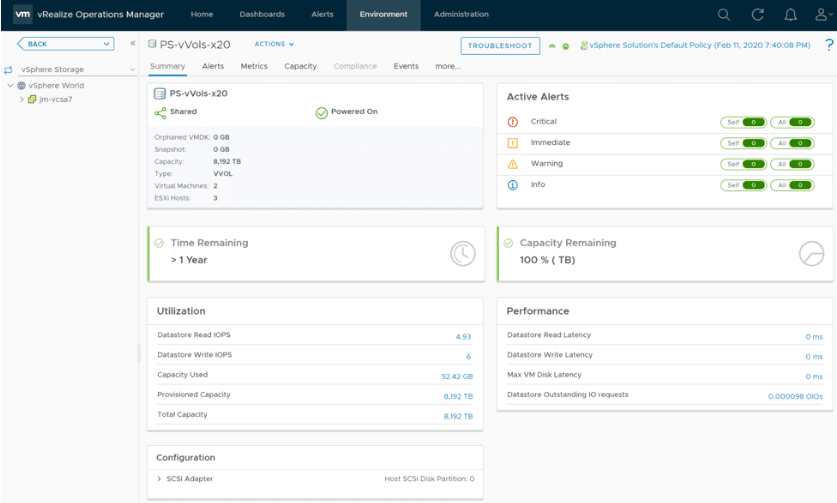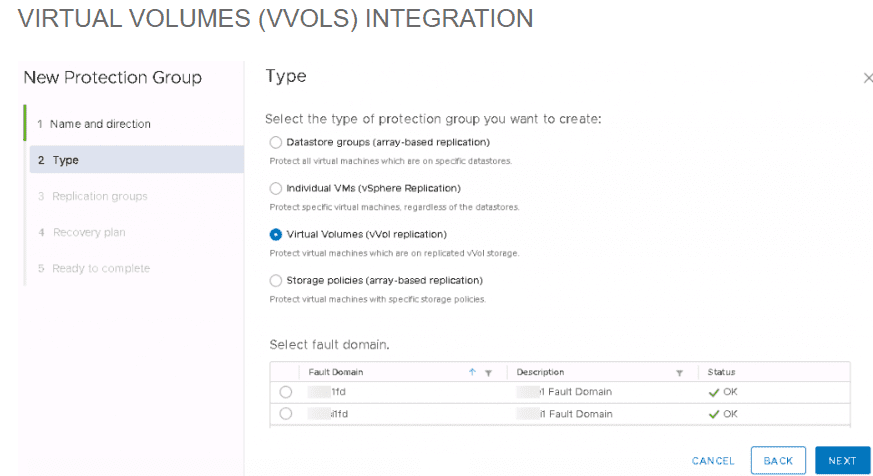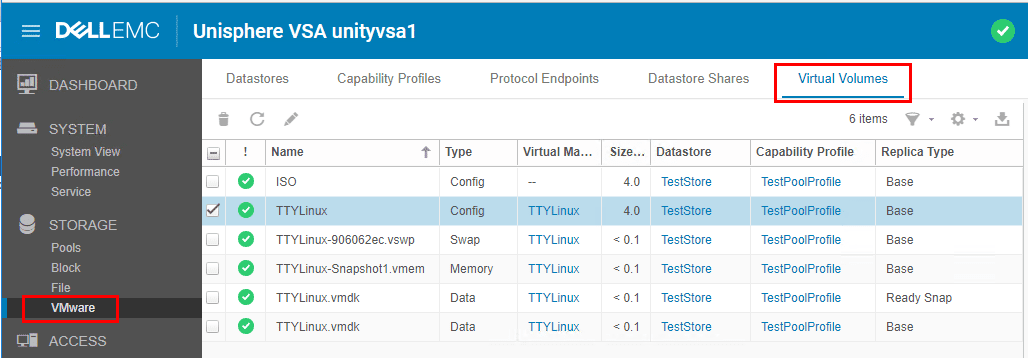VMware vSphere 7 vVols New Features

I know many have wondered about vVols and whether or not this is a technology that VMware is committed to for the long haul. The writing is on the wall that vVols is certainly a technology that is alive and well especially in vSphere 7. In fact, support and enhancements for VMware vVols continues with vSphere 7 with integration into other products in the VMware portfolio. In this post, let’s take a look at VMware vSphere 7 vVols new features and see how VMware is continuing to move the evolution of vVols forward to be the defacto technology for non-HCI storage.
What are vSphere Virtual Volumes (vVols)?
Just as a refresher in case you haven’t had contact with vVols as of yet, what are they? The vVols concept is a much newer and more efficient implementation of storage that you would typically provision on a storage array.
It is eerily similar in the underlying concepts of how components are stored when compared to vSAN. Both are object storage based. Both are capable of making use of Storage Policy Based Management (SPBM).
Instead of creating the traditional LUNs that most are familiar with creating on a storage array for the past few decades, each component of a virtual machine is a virtual volume.
The virtual volume is a special object type that corresponds to each component of the VM including disks, VMX files, snapshots, etc. Since they are not provisioned at the LUN-level, they are much more granular in nature.
This allows you to manage your VMs and virtual disks independently of one another and opens up a world of opportunities with SPBM at play.
VMware vSphere 7 vVols new features
With vSphere 7, VMware is continuing to move forward with the integration from a vVols perspective. According to VMware, the adoption of vVols continues to grow and accelerate.
Many vendors are now on board with vVols and have introduced support from a hardware perspective. This is helping to drive the adoption of the technology. Why vVols? Well, it offers many great advantages over traditional storage solutions including the following:
- No LUN management
- Faster deployments
- Simplified operations
- Full utilization of storage array functionality
What are the new features and capabilities that are found with the new vVols that has evolved with vSphere 7?
- Site Recovery Manager 8.3 vVols support
- vVols support for CNS
- vRealize Operations 8.1 vVols support
- vVols supplemental storage with VCF
Site Recovery Manager 8.3 vVols support
This has been a highly requested feature with new versions of SRM – vVols support. Now with v8.3, vVols is fully integrated. This makes for a great pairing of the two technologies.
SRM 8.3 integration makes use of vVols array-based replication. This allows customers to have access to the capabiltieis of SRM combined with vVol replication. This allows granularity for replication down to a single VM if desired.

Multiple VMs can be replicated together in what is called a consistency group. The VASA provider replaces the older SRA (storage replication adaptor) . This improves the experience moving forward. Vendors are latching on to this and VMware already has a list of vendors that are compatible with the technology including Pure, Nimble, and others.
Kubernetes CNS vVols support
With VMware vSphere 7 now having Kubernetes baked into the solution, it makes sense that the storage solutions that are supported in vSphere 7 will also support CNS storage.
One of the requirements for K8s is that you have persistent storage. Until vVols, you had to use vSAN, NFS, or VMFS for K8s storage. Now, with vVols in the mix, you can use this for CNS storage that provides the additional vVols benefits such as mobility, CSI to SPBM policy mapping.
vRealize Operations 8.1 vVols support
With vRealize Operations 8.1, vVols is now supported. You can now use vROPs 8.1 to monitor your vVols datastores the same as any other datastore that you use in your vSphere environment. This allows configuring alerting, planning, troubleshooting, and more based around your vVols datastores.

vVols as supplemental storage for VCF
Are vVols currently supported in vSphere 7 with VCF? No they are not as of yet. I imagine they will be in some future release of VCF. Does that mean that you can’t make use of vVols in some way for your VCF deployments? You certainly can.
Using vVols as supplemental storage after the workload domain has been built is an option and is supported in a VMware partner storage solution.
Wrapping Up
For those that have maybe been wondering with your next hardware refresh if vVols was still an option? Very much so. It appears that VMware is continuing to develop and integrate the technology in a large way.
The vVols solution is far superior in its capabilities when compared to the traditional LUN and opens up many powerful possibilities when thinking about the granular level at which you can control the performance and other characteristics of your virtual machines.
The VMware vSphere 7 vVols new features are worth noting how vVols is further integrated into the VMware portfolio of products across the board. If you are not doing HCI with vSAN, vVols is the way to go.







